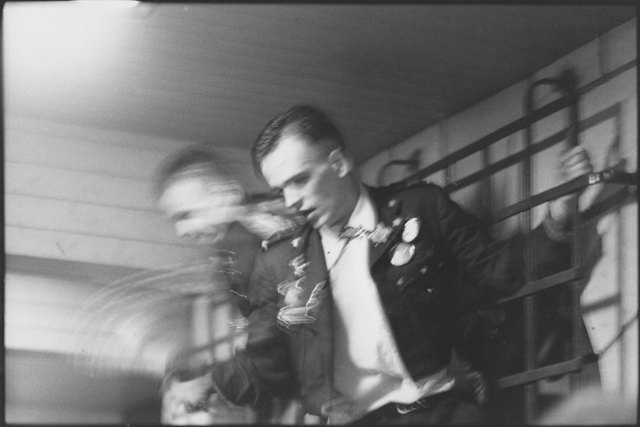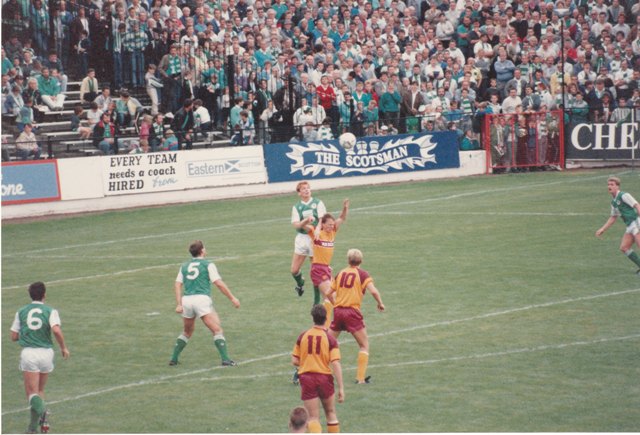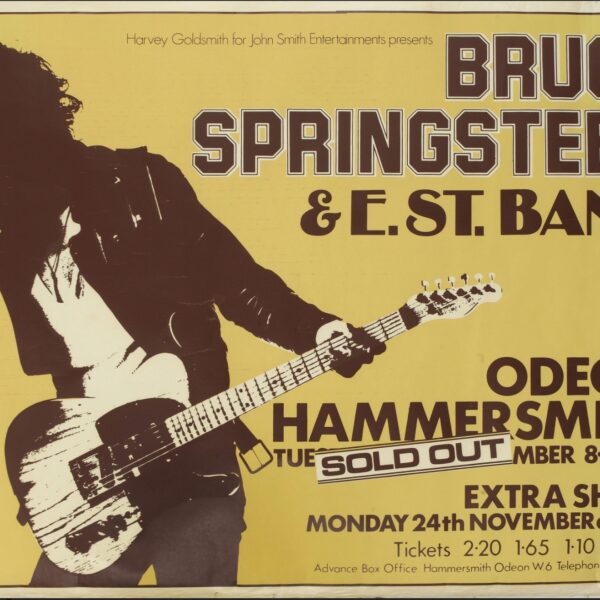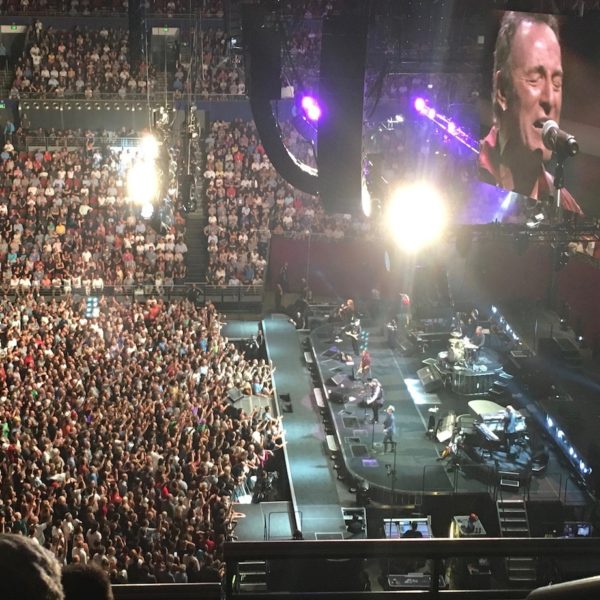Oznost tickles Edinburgh
It’s feast or famine in Edinburgh, the ancient and beautiful capital of Scotland. Every August, in an unparalleled orgy of cultural consumption, the staid city changes pace and plays host not only to its world-renowned International Festival and associated Fringe but also to Britain’s only television festival, a film festival, a jazz festival and an acoustic music festival.
While the International Festival is similar in style and content to many arts festivals throughout the world, including Adelaide’s biennial bash, the Edinburgh Fringe is bigger, brighter and more respected than any other. The sheer size of it is amazing—935 separate shows from 473 companies this year (1988), down from a record 1,005 last year.
Venues range from the Georgian splendour of the Assembly Rooms in George Street to the proverbial bus stop in Newcraighall. An increasing trend is the use of large tents and marquees.
The city is crammed with people, especially young Europeans who are willing prey for the increasingly desperate performing companies who haven’t managed to make an impression in the first week.
Walking down the street, particularly in the Old Town, you’re bound to be accosted—in the nicest possible way—by various members of say, The Over The Top Puppet Company, the Joan Collins Fan Club, A Good Grope of the Gorbals Theatre Company or the Snarling Beasties; all exhorting you to come to see their show.
Fringe administrator Mhairi MacKenzie-Robinson said on BBC Scotland: ”The Fringe couldn’t exist without the Festival and vice-versa. It’s a symbiotic relationship. We spend most of our time helping out the wee companies. The big companies can look after themselves.’ Former Fringe administrator Michael Dale commented: ‘One thing I would like to change is to screen out the acts with no redeeming features whatsoever. Unfortunately no-one’s found a way to do it yet.’
Self-reliance is the motto of the Fringe. Performers are expected to do everything from hiring a venue and organising sound and lighting to printing tickets and publicising themselves. The Fringe administration does offer a central box office and contact point as well as friendly advice for performers, but in financial terms everyone must stand on their own two feet.
At the Assembly Rooms, perhaps the Fringe’s most prestigious venue, the Oznost package was in its final stages of preparation the day before the Fringe opened. The Rooms undergo transformation from their normal spacious Georgian elegance into eight separate performing spaces for the duration.
Oznost comprised seven different acts under the one Australian Bicentennial Authority-funded banner. Put together by Melbourne impresario John Pinder, the seven acts, all Melbourne-based, were Circus Oz, Kate Ceberano, Rod Quantock, Sarah Cathcart, Julie Forsyth, a double bill of impressionist Gerry Connolly and magician Doug Tremlett and a triple bill of Wendy Harmer, Magda Szubanski and Gina Reilly.
Across town in the Cowgate under the shadow of Edinburgh Castle, the Doug Anthony All-Stars and Glyn Nicholas, who paid their own way, were also gearing up for their debut at the Gilded Balloon Theatre. The catchy and colourful Oznost poster proclaimed the arrival of culture from behind the XXXX curtain. The question was: amid such a bewildering profusion of shows, would anyone really notice?
On opening night I started with Faking It Three, a comic three-hander featuring Wendy Harmer, singer Gina Reilly and Magda Szubanski from the D-Generation. Harmer’s trademark blunt humour proved a little shocking to some of the young Scots girls in the audience, particularly during her familiar Queensland cop routine, although a topical piece of Fergie’s Aussie sister Jane went over well.
Magda Szubanski’s humour was lighter and more cerebral while Gina Reilly battled gamely with an unsympathetic sound system to impart her comic and mimic warblings. Although the show was obviously under-rehearsed, the material was strong and looked as if it would scrub up nicely.
Rod Quantock’s bus may have received all the media attention, but for me the Australian success story of this year’s Fringe was the Doug Anthony Allstars. Without the benefit of Bicentennial Authority funding, they packed them in at the Gilded Balloon on the Cowgate on sheer talent.
A three-piece from Melbourne, fresh from the Toronto Comedy Festival and appearances in New York, they presented a tight, well-paced show of topical songs and comedy, brimming with vitality and originality. Their performance, unreliant on gimmicks or technology, displayed nimble wit and impeccable harmonies. On a Saturday night, the packed Scottish crowd was in raptures by the end of the show.
They repeated the dose later with a slightly less-focussed spot at the highly fuelled Fringe Club at 2 am, and while their impact may have been slightly dissipated, the sight of singer Paul McDermott wading into a cheering audience to sort out a heckler was confrontational comedy at its best.
The following night at the Fringe Club saw compere Bob Downe (Mark Trevorrow) introducing selections from a number of acts, including fellow Melburnians the Cabbage Brothers. Trevorrow was in sparkling form in his daytime TV host persona. The 1930s-style Cabbage Bros blazed through a 20-minute spot before an appreciative audience and if you closed your eyes, it could almost have been upstairs at Melbourne’s The Last Laugh or Sydney’s late, lamented Gap Club.
The Australians did manage to make an impact at this year’s Fringe, no mean effort amid such a multitude of shows. Virtually all the performers received warm reviews (Gerry Connolly and Doug Tremlett ‘s Two-Up being the exception).
An interesting aspect of this year’s International Festival was the growth of corporate sponsorship. A decade ago, only 8 per cent of spending came from the private sector while the public sector (mainly the Edinburgh District Council) carried 47 per cent. This year, public sector support was down 36 per cent, while private sponsorship had tripled to 24 per cent.
The feast of festivals coincided with the opening of the Scottish football season. The run-down tenaments of the Easter Road area near the Hiberian football ground are a far cry from the splendid Georgian chandeliers of the Assembly Rooms.
The artistry displayed with the round ball was of a different order to that on stages all over the city, but there was no doubt what Edinburgh’s working men and women preferred.
(First published in the Australian Financial Review, 2 September 1988)







